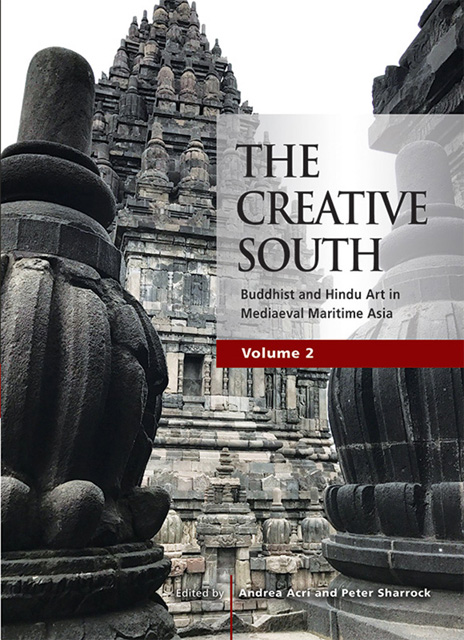Chapter 6 - The Conqueror of the Three Worlds: The Cult of Trailokyavijaya in Java Studied Through the Lens of Epigraphical and Sculptural Remain
Published online by Cambridge University Press: 30 June 2023
Summary
INTRODUCTION
Trailokyavijaya, the ‘Conqueror of the Three Worlds’, also called Vajrahūṃkāra (‘Adamantine Hūṃ Producing’), is a wrathful manifestation of Vajrapāṇi, sometimes described as a transformation of Vajrasattva (and thus identical in essence with the Buddha Mahāvairocana), or as an emanation of the Buddha Akṣobhya. He belongs to a category of beings whom Linrothe defined as ‘wrathful destroyers of obstacles’ (krodha- vighnāntaka), a class of esoteric deities whose task is not merely the protection of the devotees or the intimidation of recalcitrant beings, but also, and most importantly, the removal of external and internal hindrances and the transmutation of ignorance into wisdom. While the cult of Trailokyavijaya spanned almost the entire Asian continent over many centuries, it appears to have achieved considerable prominence in Java in the 8th–11th centuries. As it will become apparent from several elements analysed below, the communities of South Sea States, and in particular those of Sri Lanka, might have exerted a major influence on the transmission to East Asia of textual, artistic and ritual aspects related to this deity.
The aim of this chapter is to cast some light upon the diffusion and nature of the cult of Trailokyavijaya in Java between the 8th and the 11th century, through the analysis of epigraphical and sculptural remains. These two types of artefacts have different characteristics, and thus different analytical methods will be employed. Inscriptions are often dated, have a more or less explicit content, can include formulas charged with multiple esoteric meanings, and in many cases come from a very precise location, possibly from a meaningful context: as such, they can often be put in relation with specific figures, communities, buildings, texts, and ritual practices. The statuettes from Java, on the other hand, are undated, and their precise provenance is unknown; however, their approximate period of manufacture and their connection with specific texts, traditions, and regions of the Buddhist world could be reconstructed by means of their style and iconography.
The main body of this chapter will discuss the relevant epigraphic and artistic production from Java by making use of both primary and secondary sources. Other kinds of local and foreign sources, such as Indo-Tibetan and Sino-Japanese texts and artefacts, or Old Javanese literature preserved in Bali, will be referred to throughout the chapter, as a means of contextualization.
- Type
- Chapter
- Information
- The Creative SouthBuddhist and Hindu Art in Mediaeval Maritime Asia, pp. 94 - 133Publisher: ISEAS–Yusof Ishak InstitutePrint publication year: 2022

